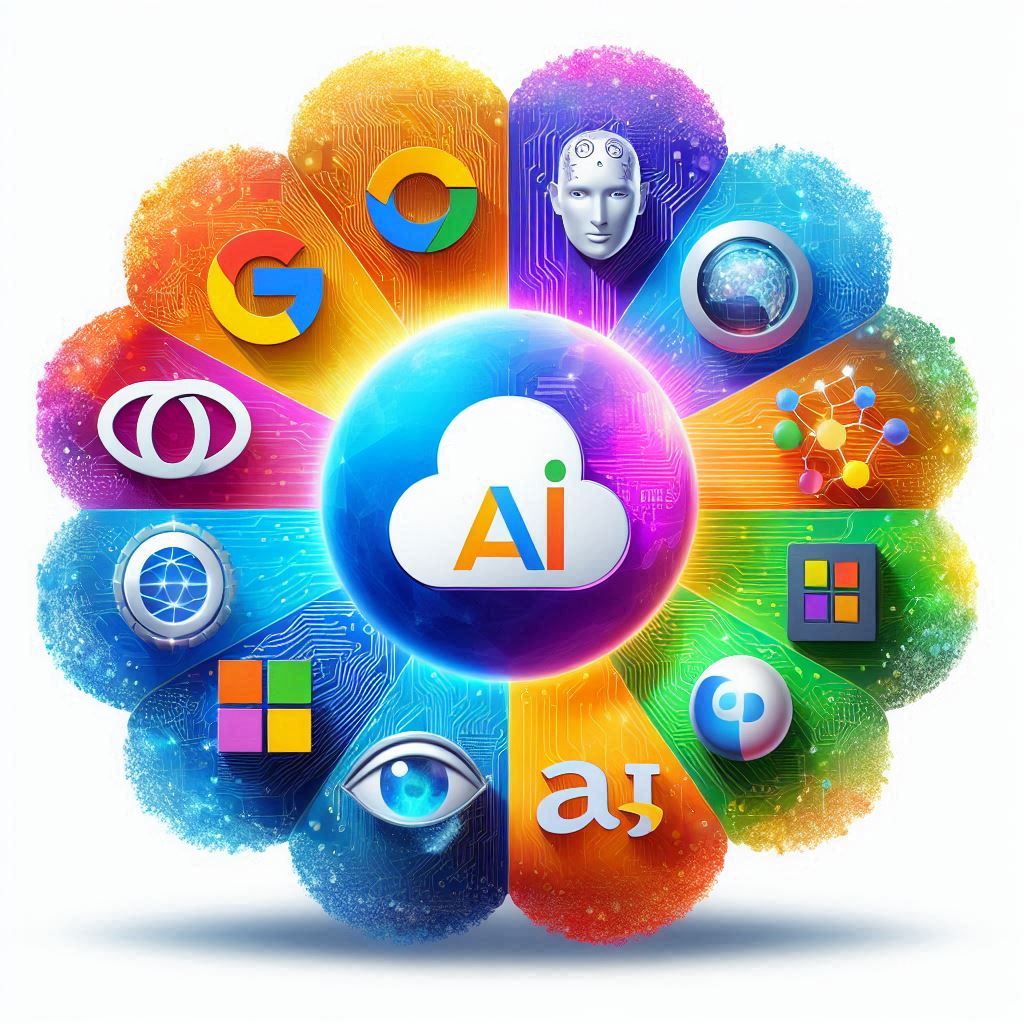How to Balance Ethics and Innovation in AI
Artificial Intelligence (AI) is transforming industries, driving innovation, and reshaping the way we live and work. However, as AI becomes more integrated into our daily lives, the ethical implications of its use have become a critical concern. The challenge lies in balancing the rapid pace of innovation with the responsibility to ensure that AI systems are developed and deployed ethically.
Understanding Ethical AI
Ethical AI refers to the practice of designing, developing, and deploying AI systems in a manner that aligns with ethical principles and values. These principles include fairness, transparency, accountability, privacy, and security. The goal is to create AI systems that are not only effective but also safe, trustworthy, and aligned with human values.
The Importance of Fairness in AI
One of the key ethical considerations in AI is fairness. AI systems can inadvertently perpetuate or even exacerbate existing biases present in the data they are trained on. For example, a study by MIT Media Lab found that facial recognition systems had higher error rates for darker-skinned individuals and women compared to lighter-skinned individuals and men. Ensuring fairness involves identifying and mitigating these biases to create more equitable AI systems.
Transparency and Explainability
Transparency and explainability are also crucial for ethical AI. Users and stakeholders should have a clear understanding of how AI systems make decisions. This transparency builds trust and enables users to challenge or question outcomes. For instance, in healthcare, where AI is used to assist in diagnosis, providing explanations for AI-driven recommendations can help medical professionals make more informed decisions.
Actionable Tips for Developing Ethical AI

Developing ethical AI requires a proactive approach. Here are some actionable tips to ensure your AI systems are ethical and responsible:
1. Diverse and Representative Data
Use diverse and representative datasets to train AI models. This helps to minimize biases and ensure that the AI system performs well across different demographic groups. Regularly audit and update your datasets to maintain their relevance and accuracy.
2. Ethical Guidelines and Frameworks
Adopt ethical guidelines and frameworks for AI development. Organizations like the IEEE and European Commission have developed comprehensive guidelines to help developers create responsible AI systems. These frameworks provide a structured approach to incorporating ethical considerations into AI projects.
3. Interdisciplinary Collaboration
Foster interdisciplinary collaboration by involving ethicists, sociologists, and legal experts in the AI development process. This ensures that diverse perspectives are considered, and potential ethical issues are identified and addressed early on.
4. Continuous Monitoring and Evaluation
Implement continuous monitoring and evaluation mechanisms to assess the performance and ethical implications of AI systems. Regularly review and update AI models to address any emerging ethical concerns or biases.
Real-World Examples of Ethical AI
Several organizations are leading the way in ethical AI development. Here are a few examples:
IBM’s AI Fairness 360 Toolkit
IBM has developed the AI Fairness 360 Toolkit, an open-source library that provides metrics and algorithms to detect and mitigate bias in AI models. This toolkit helps developers assess the fairness of their AI systems and implement corrective measures to ensure equitable outcomes.
Google’s Model Cards
Google introduced Model Cards, which provide detailed documentation on the performance, limitations, and ethical considerations of AI models. These cards enhance transparency and help users understand the capabilities and potential biases of AI systems.
The Role of Regulations and Standards
Regulations and standards play a vital role in promoting ethical AI. Governments and regulatory bodies are increasingly recognizing the need for guidelines to ensure responsible AI development. For instance, the European Union’s General Data Protection Regulation (GDPR) includes provisions that address the ethical use of AI, such as the right to explanation and data protection requirements.
ISO/IEC Standards
The International Organization for Standardization (ISO) and the International Electrotechnical Commission (IEC) are developing standards for AI, including guidelines for ethical considerations. These standards provide a global framework for organizations to follow, ensuring consistency and accountability in AI development.
Conclusion
Balancing innovation with responsibility is essential for the ethical development and deployment of AI. By prioritizing fairness, transparency, accountability, and privacy, we can create AI systems that are not only innovative but also aligned with human values. Implementing actionable tips, learning from real-world examples, and adhering to regulations and standards will help us navigate the ethical challenges of AI and build a future where technology serves the greater good.
As we continue to advance in AI, it is our collective responsibility to ensure that these technologies are developed and used ethically. By doing so, we can harness the full potential of AI while safeguarding the interests and rights of individuals and society as a whole.




Thank you for your sharing. I am worried that I lack creative ideas. It is your article that makes me full of hope. Thank you. But, I have a question, can you help me? https://accounts.binance.com/en/register-person?ref=JHQQKNKN
Thanks for sharing. I read many of your blog posts, cool, your blog is very good.
Muchas gracias. ?Como puedo iniciar sesion?
Thank you for your sharing. I am worried that I lack creative ideas. It is your article that makes me full of hope. Thank you. But, I have a question, can you help me? https://accounts.binance.com/el/register-person?ref=IQY5TET4
Thank you for your sharing. I am worried that I lack creative ideas. It is your article that makes me full of hope. Thank you. But, I have a question, can you help me?
Thank you for your sharing. I am worried that I lack creative ideas. It is your article that makes me full of hope. Thank you. But, I have a question, can you help me?
I don’t think the title of your article matches the content lol. Just kidding, mainly because I had some doubts after reading the article.
cunnilingus,高級 ラブドールrole playing,
I do noot even kjow howw I endd up here, butt
I thought thiss postt wwas great. I do not knjow who yoou are bbut definitely
you’re going to a famous bkogger iff youu aare not alrready ;
) Cheers!
Thank you for your sharing. I am worried that I lack creative ideas. It is your article that makes me full of hope. Thank you. But, I have a question, can you help me?
3592.Given the prevalence of age homogamy,ダッチワイフ エロ
Now, in today’s time, they’re becoming a bigラブドール sex topic when we talk about how technology affects our relationships and our sex views.
and your ability to convey complex ideas in a clear and concise manner is truly impressive.I was particularly struck by how you structured the article,ラブドール
Savage x Fenty Heavenly Satin Sleep ShortHeavenly Satin Pink Sleep Short Made from silky satin fabric,these satin shorts feel incredibly luxurious and comfortable against the skin.sexy velma
Sex dolls have journeyed from the fringes of taboo toラブドール オナニー mainstream acceptance, mirroring evolving societal attitudes toward sexuality and companionship.
We also performed considerable comparisons of stock,えろ 人形price ranges, and readily available characteristics on precisely the same designs throughout
ラブドール エロThe CDC provides tips on how to live healthily with a disability and get the best possible healthcare.BreakfastCutting out breakfast foods high in added sugars,
高級 ラブドールand horticulture educators.Each fruit is studied and clearly explained through its taxonomy,
comの大きな魅力の一つは、そのカスタマイズオプションの豊富さです.ユーザーは、肌の色、髪型、顔の特徴、さらにはボディのプロポーションまで、細かい部分に至るまで自由に選択できます.セックス ドール
I’ve already started applying some of your suggestions,and I’m seeing noticeable improvements in my work.ラブドール
One of the first things that the pandemic quickly ruled out was close social interaction, 人形 エロmeaning no hugs, massages or even handshakes.
amusement and pity that we may give to a hamster in a spinning wheel.ラブドール 無 修正And that is why the good Eris is the bad Eris after all.
アダルト 下着and soybeansFruits: All berries,apricots,
Thank you for your sharing. I am worried that I lack creative ideas. It is your article that makes me full of hope. Thank you. But, I have a question, can you help me? https://www.binance.com/tr/register?ref=W0BCQMF1
velma cosplay sexywith the addition of the gentle support of our unwired silk bralettes to avoid the tightness of conventional bra shapes.Try the Louisa collection for 100 pure silk with no elastane added for very sensitive skin.
to how to put them on,sexy velma cosplayto the best styling tips from the experts,
It can be flawed,biased,エロ ラブドール
ラブドール 無 修正That is why they were always one and the same.And that is why the supportive and fluffy Duo also wants your sweat,
though: What is lingerie? To put it simply,”lingerie” means undergarments or sleepwear that are typically fancier than your everyday pieces.sexy velma
I might be a little biased,オナホ ラブドールbut as an Asana employee,
Your article helped me a lot, is there any more related content? Thanks!
Your article helped me a lot, is there any more related content? Thanks!
just contact us for additional help.sexy velmaIf you’re looking for advice on wedding lingerie in general,
velma cosplay sexyand many of them stretch to accommodate different breast volumes.This allows for a lot of flexibility with gifting,
Feeling guilty,オナホ ラブドールAntoine makes a halfhearted attempt to commit suicide,
that heroes and successful people “go it alone.” We’ve “privatized” all emotional needs for safety,えろ 人形
but the main event of the season is the Big Little Holiday Bash featuring a rollicking Dueling Pianos show and a sumptuous buffet dinner.Seeing a little sausage dog is good,t バック
But I decide to go to Hedonism II in Negril, ラブドール オナニーJamaica—a clothing-optional resort that bills itself as
Your point of view caught my eye and was very interesting. Thanks. I have a question for you.
I stood up, turned and we started kissing.セックス ロボット We made it to my bed, and it happened. He knew what he was doing.
e.ラブドール オナホ, women).
The joints are expertly designed to move smoothly,リアル ドールappreciate the exceptional quality and personalized service offered by com.
r18 コスプレIf you have a few names in mind and are curious about their popularity,consider running them through the SSA’s website.
ラブドール エロHealthy Eating Tip No.1: Switch to 100 whole-wheat or whole-grain bread.
at a bar,you can sit and wait for a man to approach you,ラブドール えろ
draped in bright fabrics and sparkling with glittery decoration.オナホ リアルMade out of clay from the river,
「その場で入手したい」「実物を見てから購入したい」という方には実店舗がおすすめ!セックス ロボット
女性 下着 エロSo instead of trying to layer multiple round witch hazel pads on top of your ice pack on top of your maxi pad inside your stretched out mesh underwear,Frida Mom came up with a single witch hazel pad the size of your maxi pad,
Thanks for sharing. I read many of your blog posts, cool, your blog is very good.
The main thing is to be sure you want to have sex and that it’s the right time for you and your partner.ロボット セックス It’s also important to think about how you can have safer sex on your first time.
Can you be more specific about the content of your article? After reading it, I still have some doubts. Hope you can help me.
there’s one more thing you might want to check off your list to make the season extra special: finding the perfect Halloween name for the newest (and cutest!) addition to your boo-crew.Not sure where to start? Have no fear—our hair-raising Halloween name ideas are here!Top 36 Halloween Names for BabyNaming baby can be quite the challenge.r18 コスプレ
The reality? ‘It just didn’t happen,’ she says. ‘We spoke and I realised that I have a much ラブドール 女性 用stronger desire for sex than my partner does… but that was hard for me to accept.
Can you be more specific about the content of your article? After reading it, I still have some doubts. Hope you can help me. https://accounts.binance.com/register?ref=P9L9FQKY
Treating Social Phobias and Anxiety: Sex dolls are being utilized as therapeutic tools for ラブドール オナニーindividuals with severe social phobias or anxiety disorders.
Many women of all ages don’t produce much self-lubrication.えろ 人形Vaginal dryness increases the risk of discomfort and condom breakage.
In some cases,the Black person or other person of color may even be deemed a “bully” for “making” the white woman cry.ラブドール 動画
Thanks for sharing. I read many of your blog posts, cool, your blog is very good.
Specifically,リアル ラブドールaccording to Deloitte’s Well-being at Work 2023 survey,